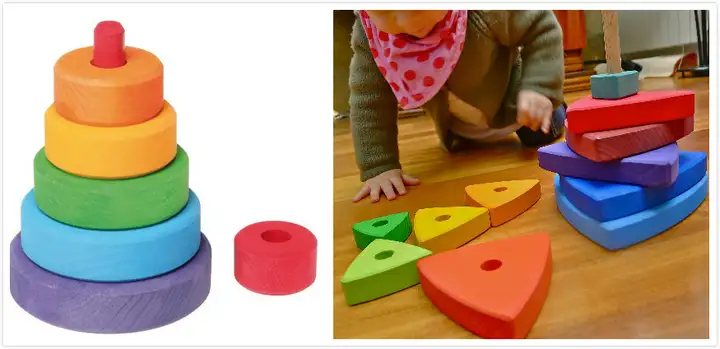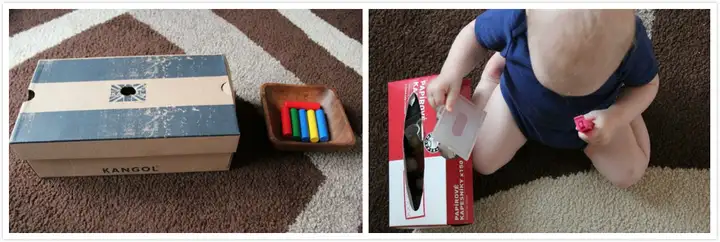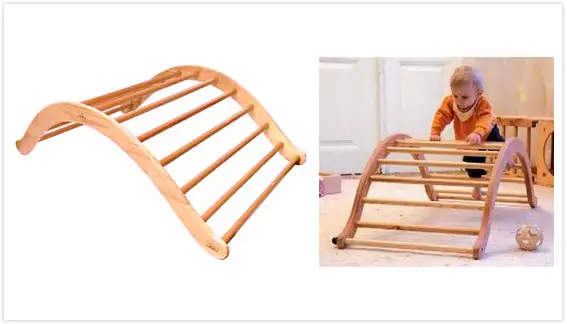(I) Physical development of infants
Before preparing toys for 0-1 year olds, we need to understand the physical development of 0-1 year olds.
When we talk about the 0-1 baby's body, we have to talk about neuronal development.
A newborn's brain has nearly 100 billion neurons.

The transfer of information between neurons is a bit like the transfer of electricity.
When babies are first born, only a small number of neurons have this coating. This layer acts as an insulator, keeping the current flowing through the neuron from leaking out, making sure the information gets where it needs to go. They are made up of fat and protein. The breast milk a baby drinks contains a lot of fat and protein, most of which is used to make this layer.
Only the wrapped neurons can do exactly what the brain wants. At one month old, for example, a child can't consciously move his or her fingers because the envelope hasn't grown there yet. The information from the neuron cannot be transmitted to the finger effectively. At this point, we are going to talk about the law of inclusion growth.
The way it grows is this,

Head to end: The head moves first, then the hands, then the feet.
From proximal to distal: The center of the body moves first, then the ends are learned. For example, it will control the chest and abdomen first, then the wrist, and finally the fingers.
From simple to complex: first learn the simple big movements, and then grasp the delicate small movements. For example, grasp first, then pinch.
That's why children move their eyes before they move their necks; The shoulders first, then the chest; The abdomen will be moved first, then the legs, and finally the fine movements of the fingers and feet. Instead of moving your legs first and then your neck. This is what we call the law of development.
The basic rules of infant movement:
Month 1: Eyes move consciously
Month 2: Head, can look up
Month 3: Arm
Month 4: Able to turn over
Month 5-6: Can sit up with AIDS
Month 7: Sit up independently
Month 8: Crawling
Month 9: Stand up with the aid
Month 10: Stand and walk on AIDS
Month 11-12: Stand on your own feet
Months 12-14: Walk
Knowing how a baby's body develops can help us decide what toys we need for each stage of life from 0 to 1.
2) Development and demand at various stages
I've divided the 0-1 year olds into four stages. At each stage, the child has a new development, a new posture. At each stage, there are also new requirements.
Month 1-3: Lie down
Month 4-6: Able to roll over - able to sit with AIDS
Months 7-9: Able to sit - able to crawl
Month 10-12: Able to stand - able to walk
1. Month 1-3
This stage can stimulate the eyes - neck - arms. We can prepare some toys to stimulate the baby's vision. At two or three months, add toys that can touch your hands.
Let's start with the newborn's vision.
Newborn babies can only distinguish between light and dark at first
Loves complex shapes and curves
Babies like to look at people's faces Baby
Sharp contrasting colors and medium-brightness items are most attractive to a newborn baby's gaze.
As the child's vision develops, we can begin to switch to different bells. Depending on your baby's preferences, see which one he is most interested in and then hang it.
Here are all kinds of Montessori style handcrafted hanging bells, interested friends can make a few at home for the baby.

In addition, the baby begins to make conscious movements of tapping things. Sometimes, they also have the involuntary action of kicking. At this time, you can prepare to shoot with your hand or kick the bell that will ring.
For example: a ribbon and a bell.
Hang it on a child's chest where they can see it with their hands, or at their feet where they can kick it. This is a low cost and fun hanging bell.

Another example: a stretch band, with a ring. A sling that the child can tap and grasp.

At this time, the child has the involuntary movement of grasping. We can prepare some small toys for children to grasp and make a sound.

2. Month 4-6
For the first 3 months, we focused on visual and tactile toys that made a sound.
By 4-6 months, the child can gradually sit up with AIDS. At this point, their position was no longer lying down. Their hands are free to play with the toys they grasp.
At this stage, we can prepare toys that stimulate the hand muscles and eye-hand coordination. At the same time, the child begins to grow teeth. They often have to take things and bite into their mouths. The toy should be something they can bite.
So, the main uses of toys at this stage are:
Stretched out his hand
catch
touch
Mouth to bite
Try to rotate your wrist
Use both hands at once
Meet these conditions, can be used as children's toys.
例如下面这些:
突起的橡胶球 Rubber Ball with Protrusions
Sphere with Little Balls


- If you're looking for something to hold in your hand while your child is teething, consider natural foods:
apple
Raw carrots
French bread
3. Month 7-9
By the age of 7-9 months, the child's eye-hand coordination will be further refined. Before you could only reach out and grab; Touch; Rotate the wrist; Put it in your mouth. Now, he can make finer movements. Like, take it out, put it in, let go.
So, we can prepare new toys for them with eye-hand coordination to meet their new needs.
Baby Tissue Box
Christmas Ornaments Hanging Tree Decorations
This is also a good toy. tracker A toy. Can exercise children's eyes tracking the movement of objects, conducive to the future reading ability; Ability to balance; The child can still help him stand up.
The child began to crawl and try to stand up. They no longer just sit and play. They need more space, they need more movement. At this time, in addition to preparing new toys, parents also need to pay more attention to the safety of the home environment, such as tablecloths and curtains do not hang to the floor, or children will climb over to pull it down.
At this stage, we will prepare a basket of balls. It's best to pick a ball that won't roll too fast. It will be easier for the baby to catch up and not be too frustrated.
As mentioned above, at this stage, the child's range of activities and ability to move are greatly increased. They will especially like the steps, and we can prepare a little step or two for them to climb up and down.

Have something they can hold and hold to stand up. Examples include heavy furniture, or shelves for children to hold on to.
4. Month 10-12
At this time, the child's eye-hand coordination develops further. At the same time, shapes can be identified and paired. The muscles of the hands can also do more precise movements.
Shape matching box (Just start with three shapes. Wait until the baby has mastered three, then switch to more shapes.)

Wooden Montessori Fishing Toys for Toddlers
Of course, you can also make your own toys using materials from home:

By exercising their muscles many times, children begin to walk and stand. At this time, they need more room to walk around and toys that will work their leg muscles.
Cart push wagon
Should choose a wide point of emphasis, not easy to tip over. The child is still unsteady on foot and needs a cart. If the cart is too light and narrow, it will be unstable.

Baby Track
climbing arch
At this time, the child can also start making art:
crayon
easel

(3) Talking, reading and music
Between the ages of 0-1 is the period when a newborn builds trust in the environment. Mom and dad's voice can give children a sense of security. Adults should interact with their babies, talk to them, sing and read to them.
Music is also a very important part. Parents can play Musical Instruments, sing songs and play music for their children. By the time the baby is able to hold instruments with his hands, he can join his parents in playing music.
You can always have a small basket at home for all kinds of small Musical Instruments. For example: tambourine/rattle/rattle gourd/mini African drum/sand hammer/harmonica/rain drum/glockenspiel
(4) the last few additions
1. The nature
These are all toys that can be used indoors. But let's not forget that nature is the best playground and nature has the best toys. For example, the leaves on a tree move to and fro with the wind, which is a natural mobile bell.
Take your kids outside on a sunny weekend to look at flowers, butterflies, and leaves. These are the best toys. There, the sound of birds and the wind. Adult companionship is also very important.
2. Homemade toys
Also, don't assume that expensive toys are the best toys. In fact, behind each toy, is to meet the child's need to use a certain skill or action. For example, grab/let go/take it out/shove it in/shake it/take it out/put it in.
Interested parents can actually use ready-made materials at home to make toys that their children are interested in. For example, a piggy bank combined with a coin is a toy to take out and put in/hold. Another example is an empty tissue box and a few small squares of cloth, which is also a toy to pull out and put in/draw. The small square cloth in the tissue box can not only meet the needs of the movement of the child, but also save the paper towels at home, which will not be wasted by the baby. Give it a try.
3. Parents' observation ability
Adult observation is also very important. Every child develops at a different pace. We have to learn to observe the baby and determine what he is interested in and what he is able to do at this stage. The hand can be grasped or squeezed or extracted. Only through careful observation can we prepare the most suitable toys for them at this stage.








